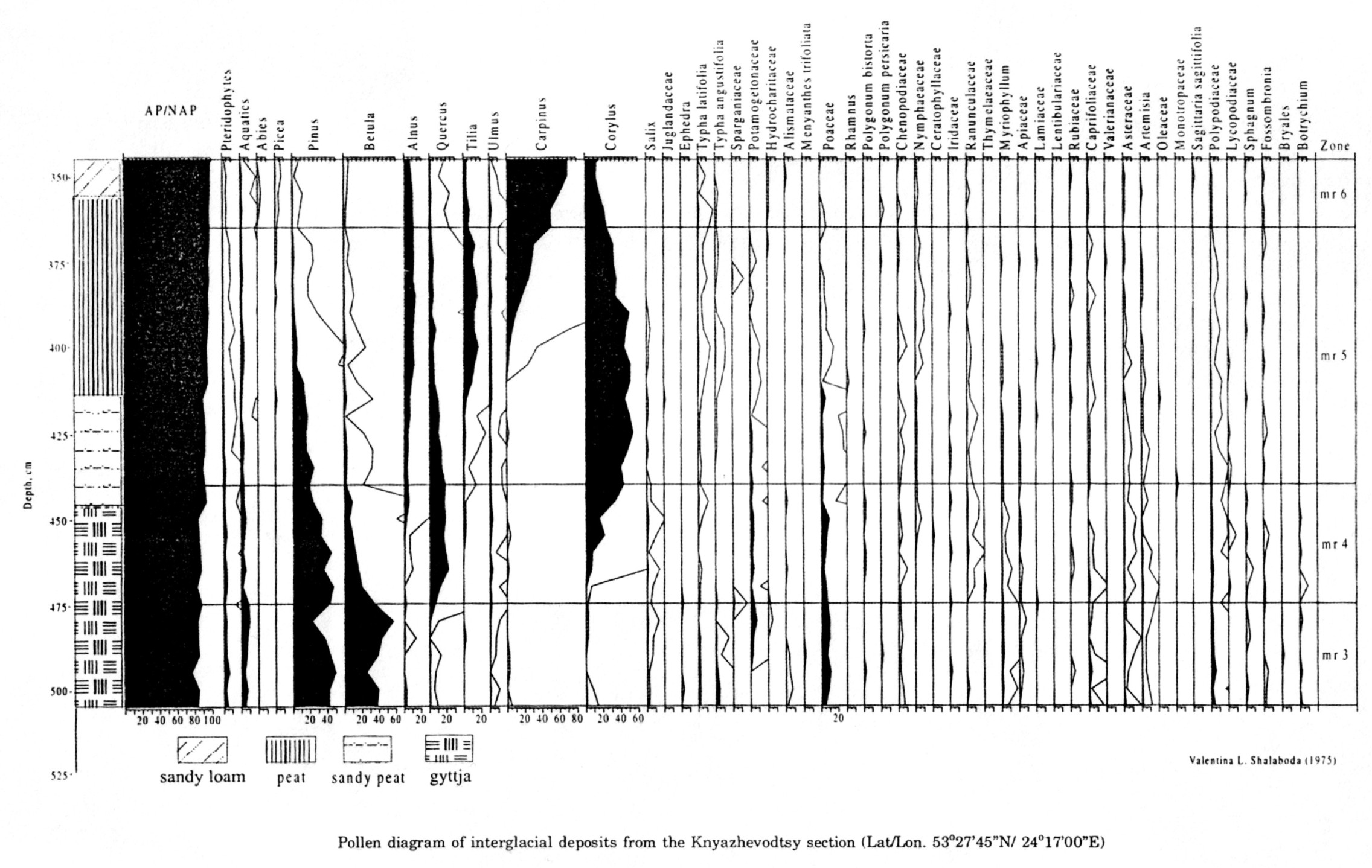Княжеводцы
Spore-pollen analysis revealed the regional features of the vegetation communities forming. The percentages of all the AP and NAP taxa have been calculated of the total pollen sum AP+NAP (AP = pollen sum of trees and shrubs; NAP = pollen sum of upland herbs). The percentages of the pteridophytes and aquatics have been calculated of the total pollen sum. Indication of the pollen zones has been fulfilled according to the scheme of Makhnach et al. (1981) with some corrections based on more recent investigations.
Below is given a short description of the resemblance and differences of the pollen zones beginning from the Sozhski Late Glacial.
DESCRIPTION OF THE POLLEN ZONES
MURAVIAN (=EEMIAN, MIKULINSKI) INTERGLACIAL
mr3 — Pinus-Betula-Quercus I Pinus-Betula-Carpinus
In general, a domination of Pinus and Betula as well as a significant participation of the NAP at the background of the permanent Quercetum mixtum occurrence are characteristic of this zone.
mr4 — Quercus-Pinus-Corylus
Maximum of Quercus along with an increasing percentages of Corylus and decreasing participation of Pinus is a common feature of this zone over the whole study area.
mr5 — Corylus-Tilia-Alnus
Arboreal species dominate while the herb plants are few. Synchronous maxima of Tilia and Alnus, preceded by the maximum of Corylus are characteristic of this zone. In most sections these events take place against a background of an increasing role of Carpinus.
mr6 — Carpinus
The principal feature of this zone is the maximum of Carpinus, the presence of Picea and, increase of its percentage by the end of the zone. In Knyazhevodtsy rare grains of Abies are met and Betula, Ulmus, Quercus are present.
Shalaboda V.L. Characteristic features of Muravian (Eemian) pollen succession from various regions of Belarus // Acta Paleobotanica. 41(1). 2001. Pp. 27-41.

